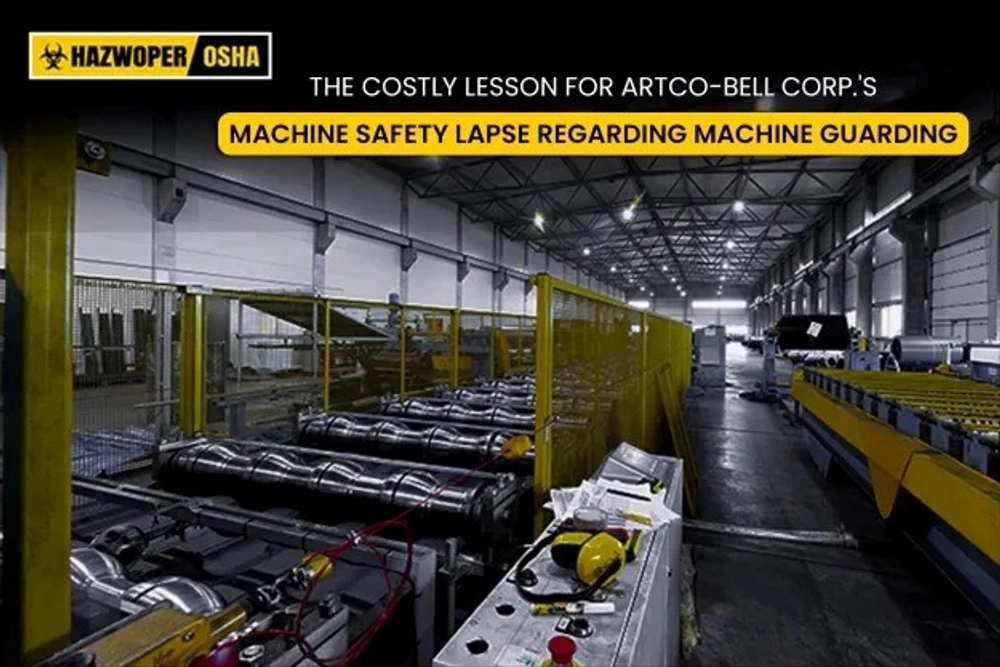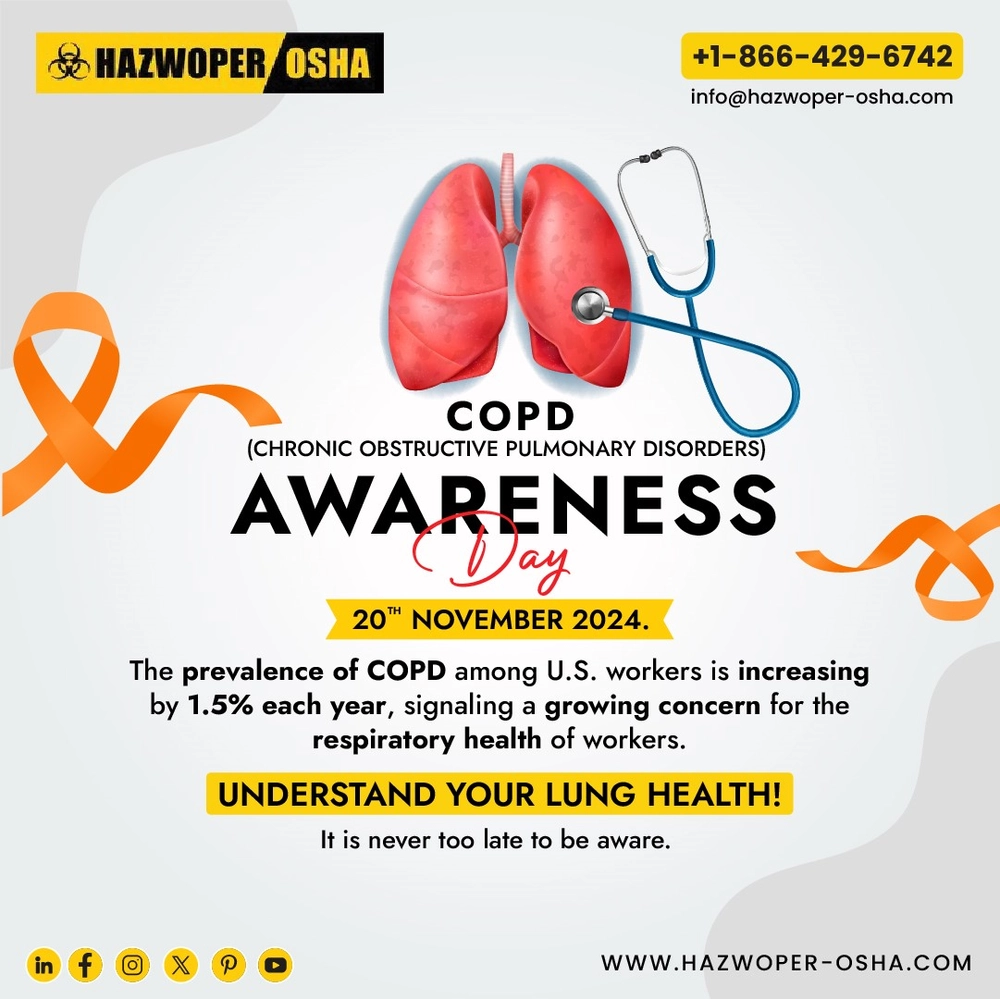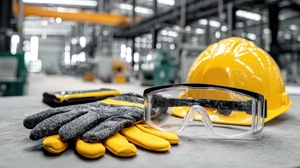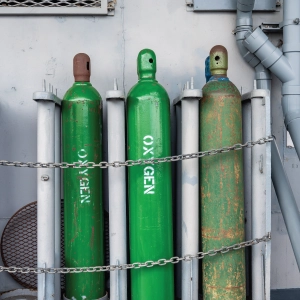The Costly Lesson for Artco-Bell Corp.'s Machine Safety Lapse Regarding Machine Guarding

Introduction:
Unguarded machinery in industrial settings is a major risk that causes severe and permanent injuries and life losses. In a Texas-based furniture manufacturer, the Artco-Bell Corp, one of the employees suffered a severe arm and hand injury in April 2024 while cleaning the machine rollers. In addition to this safety lapse, Artco-Bell Corp was also exposing its workers to the respirable silica hazards that lead to silicosis, which is uncurable. In this blog post, learn more about the safety lapses at Artco-Bell and present OSHA findings. We will also present the essential steps industrial employers must take to mitigate these hazards and protect their workforce from health risks and preventable injuries.
What Happened at Artco-Bell Corp?
An employee at the Artco Bell Corp, Texas, a furniture manufacturing company got serious hand & arm injuries due to lack of safety protocols pertaining to machine guarding. In April 2024, a preventable accident happened as one of their worker's arms got pulled into the machinery as he was cleaning the machine rollers with a garden hose. The machine was unguarded as the hose got caught in the rollers, which caused the worker a permanent injury. The U.S. Department of Labor's OSHA investigation concluded that this tragedy was preventable if the machine had proper guards installed. In addition to this safety violation, Artco-Bell also exposed its employees to respirable crystalline silica, which is well-known for causing silicosis, which is a form of irreversible lung damage. Artco-Bell Corp has been in business for over 5 decades and is now required to implement strict safety practices for its 250 employees' protection and well-being.
Legal Action by the Department of Labor Against Safety Violations by Artco-Bell Corp.
Now, Artco-Bell is facing severe legal repercussions from the U.S. Department of Labor as OSHA has uncovered various safety violations by the company. As the worker got injured due to the company's negligence in meeting the required safety and guarding standards, OSHA has proposed $257,283 in penalties. Artco-Bell faced 24 severe citations against it and was penalized for not implementing the machine guards that could have prevented this accident. OSHA has also identified another serious hazard of silica exposure, which is the cause of chronic respiratory damage. Artco-Bell now needs to correct its safety oversights regarding the machinery safeguards and failed silica dust controls, addressed by these penalties. The company has 15 business days to contest the citations with the Occupational Safety and Health Review Commission.
What Is Machine Guarding and Why It's Crucial in Workplaces with Moving Machinery?
Machine guarding is a safety measure that protects the workers from the moving machinery and other hazards related to mechanical operations. OSHA reports that annually, almost 18,000 employees get injured due to machine-guarding incidents, with many of these injuries being severe and needing amputations and lacerations.
Machine guarding has 5 types in general that are used to protect the employees and personnel working close to it. These include:
1. Guards:
They prevent contact with the machine by acting as a physical barrier. Guards are interlocked, fixed, adjustable, or self-adjusting.
2. Devices:
They fend off access to the hazardous area. Devices include safety trip controls, gates, two-hand controls, pullback or restraint straps, and presence-sensing devices.
3. Ejection Mechanism and Automated Feeding:
The operator is kept at a distance from the operation point while handling stock (materials).
4. Machine Distance or Location:
It removes hazards from the operator's work area.
5. Diverse Aids:
These aids protect the employees who work closely around the operating machinery. It includes awareness barriers and shields containing sprays, sparks, and chips like flying debris.
The basic principle behind machine guarding is to provide a physical barrier that shields the person from dangerous moving parts. Not only does machine guarding secure the workplace, but it also makes the workplace compliant with the legal regulations that help businesses avoid costly penalties and streamline their operational efficiency. In reality, the companies that implement proper machine guarding report a 20-40% reduction in workplace injuries.
Understanding Silica and Its Risks: The Path to Silicosis
Naturally found in materials like stone, sand, and concrete, silica is a significant health risk when inhaled as airborne dust. Long-term exposure to respirable crystalline silica (RCS) leads to silicosis, which is the scarring of lung tissue that damages breathing. Shockingly, almost 2.3 million workers in the USA are exposed to silica dust annually, as reported by the CDC. What is more concerning is that almost 1,200 deaths each year occur due to silica-related diseases, including Chronic Obstructive pulmonary disorder (COPD) and lung cancer. With World COPD Day approaching on 20th November, raising awareness each year about the importance of respiratory health is absolutely necessary. In industries such as mining and construction, where drilling and cutting releases fine silica particles into the air, the risk of silica-induced lung cancer is up to 30%. Exposure to these hazards increases the need to implement effective control measures to protect workers from long-term silica exposure.

Key Safety Measures for Machine Guarding and Silica Exposure
To make any workplace safer from silica exposure and ensure the machines are guarded, the following measures should be implemented:
Safety Tips for Machine Guarding:
- Station proper Guards: All the machinery should have proper guards installed, including interlocking or fixed guards, to shun workers' access to moving machinery parts. Guards must be made from sturdy materials and fastened securely.
- Perform Regular Inspections: Inspect the machine guards regularly to check their state and functionality. Damaged or missing guards should be replaced or repaired immediately.
- Use Lockout/Tagout Procedures: Use the lockout/tagout procedure while machine maintenance to avert accidental machine start-up. All employees must be trained to conduct the LOTO procedures. HAZWOPER OSHA Training offers OSHA Lockout Tagout Training in various formats, including online, onsite, virtual instructor, and, SCORM, to help the employee maintain and work with machines safely and confidently.
- Keep Clutter-free Workplace: Spills and clutter are major hazards around the machinery. Accident risks are reduced in a clean environment.
- Never Remove Guards: Never remove the guards from the machines for convenience.
- Stay Alert of Surrounding: Employees should learn to stay alert regarding their surroundings and stay mindful while operating machines.
For more detailed insights, read our blog post on The role of Lockout Tagout Training in Electrical Safety.
Safety Tips for Silica Exposure
To make your workplace silica-free, implement these safety procedures:
- Perform Risk Assessments: Assess your workplace regularly to look out for silica dust exposure risks and mitigate them.
- Implement Engineering Controls: Place the engineering controls, such as water sprays and ventilation systems, to cut down the spread of silica dust during operations.
- Use Suitable Personal Protective Equipment (PPE): Employees must wear the appropriate PPE while working in silica-exposed environments. Employers should provide training to employees on how to use the PPE correctly.
- Use Safe Work Practices: The workplace should enforce safe practices that reduce dust generation. These practices include wet-cutting methods and using built-in dust collection systems and tools.
- Provide Regular Updated Training: The employees working in the industry should receive updated training on silica awareness that trains them to use protective equipment against silica exposure, along with the health risks related to silica exposure. HAZWOPER OSHA Training offers OSHA Silica Awareness Training to educate workers about respirable crystalline silica hazards. Our training is available On-site, online, virtual-instructor-led, and in SCORM formats to cater to the needs of various clientele.
To understand in-depth silica exposure and the risks it poses to human health, read our blog, Silica Exposure Awareness for Occupational Safety.
Every workplace can become safer with reduced risks of injuries by following the safety tips related to silica exposure and machine guarding, making a healthy and safer environment for all employees.
Conclusion
The recent Artco-Bell Corp incident is a reminder that workplace safety is non-negotiable, and it is the responsibility of each employee and employer to stick to workplace safety SOPs. Companies can foster an environment where safety and productivity go hand in hand by providing safety training against silica exposure and guarding machines. Regular training, proper PPE use, and effective safety measures save the workforce and build trust, respect, and resilience. A safer workplace is something we all can create, so let's step further together.
References:
U.S Department of Labor, 21st Oct 2024, Department of Labor investigation of worker's serious injuries finds Texas furniture manufacturer failed to install required machine guards, https://www.osha.gov/news/newsreleases/dallas/20241021
Area Safe Products, June 19th 2024, The Importance of Machine Guarding: Ensuring Safety and Efficiency in the Workplace, https://www.areasafe.com.au/learning-centre/learning-centre/the-importance-of-machine-guarding-ensuring-safety-and-efficiency-in-the-workplace/

 EN |
EN |  ES
ES





























































































































